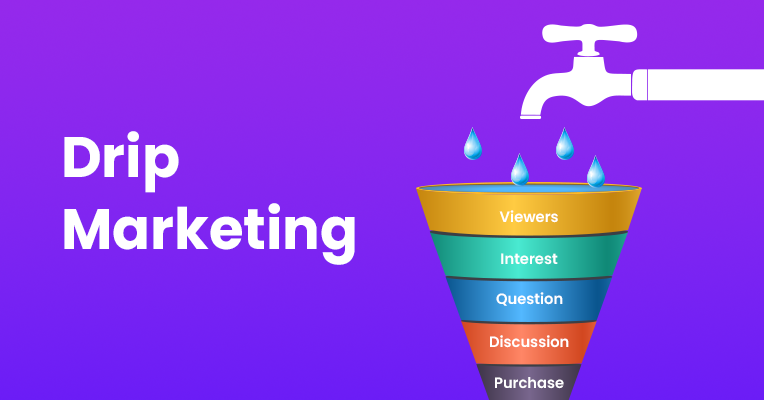Automated Drip Campaigns/ Introduction to Automated Drip Campaigns / Drip Campaign Objectives/ Types of Drip Campaigns / Planning and Strategy / Content Creation and Sequencing / Personalization and Segmentation / Automation Tools and Platforms / A/B Testing and Optimization / Setting up Drip Campaigns / Monitoring and Managing Campaigns / Conversion and Goal Tracking / Timing and Frequency / Data Privacy and Compliance / Multichannel Integration / Behavior-Triggered Drip Campaigns / Scalability and Segmentation / AI and Predictive Analytics / Identifying Inactive Subscribers or Customers / Re-engagement Content Strategies / Win-back Campaign Metrics / E-commerce Drip Campaigns / SaaS and Software Onboarding / B2B Lead Nurturing / Cross-Cultural Considerations / Language Segmentation / Key Performance Indicators (KPIs) / Data Analytics and Insights / ROI Calculation / Deliverability and Spam Issues / Message Fatigue and Unsubscribes / Data Management and Integration Challenges
Real-World Examples of Successful Drip Campaigns
1. Amazon: Personalized Product Recommendations
Case Study Overview: Amazon’s drip campaigns excel in personalized product recommendations based on user behavior and purchase history. Their tailored emails suggest products similar to those previously viewed or purchased, enhancing customer engagement and driving sales.
Lesson Learned: Personalization is key. Analyzing user behavior and providing tailored recommendations significantly boosts engagement and conversions.
2. Netflix: Trigger-Based Content Suggestions
Case Study Overview: Netflix uses trigger-based drip campaigns to recommend content based on users' viewing habits and preferences. Their emails suggest new releases or content similar to what users have watched, keeping subscribers engaged and retained.
Lesson Learned: Utilize trigger-based automation. Delivering content based on user actions maintains relevance and keeps audiences engaged over time.
Learning from Case Studies to Improve Your Campaigns
1. Data-Driven Decision Making
Lesson Learned: Use data insights to drive campaign decisions. Analyze user behavior, preferences, and interaction patterns to tailor content and optimize campaigns for maximum impact.
2. Segmentation and Personalization
Lesson Learned: Implement advanced segmentation techniques. Segment your audience based on behavior or preferences to deliver hyper-personalized content, increasing relevance and engagement.
3. Timely and Relevant Communication
Lesson Learned: Ensure timely communication. Use automation to send messages at optimal times and offer content aligned with user actions or interests for heightened engagement.
Real-world case studies serve as valuable learning tools, offering practical insights into the strategies and tactics that drive successful drip campaigns.
In conclusion, examining case studies of successful drip campaigns provides a wealth of knowledge and inspiration for marketers. By dissecting the strategies employed by industry leaders like Amazon and Netflix, marketers can draw actionable lessons. Incorporating personalization, data-driven decision-making, segmentation, and timely communication into drip campaigns can significantly enhance their effectiveness. Leveraging insights from these case studies empowers marketers to optimize their drip campaigns, fostering stronger engagement, and driving better results.
Automated Drip Campaigns/ Introduction to Automated Drip Campaigns / Drip Campaign Objectives/ Types of Drip Campaigns / Planning and Strategy / Content Creation and Sequencing / Personalization and Segmentation / Automation Tools and Platforms / A/B Testing and Optimization / Setting up Drip Campaigns / Monitoring and Managing Campaigns / Conversion and Goal Tracking / Timing and Frequency / Data Privacy and Compliance / Multichannel Integration / Behavior-Triggered Drip Campaigns / Scalability and Segmentation / AI and Predictive Analytics / Identifying Inactive Subscribers or Customers / Re-engagement Content Strategies / Win-back Campaign Metrics / E-commerce Drip Campaigns / SaaS and Software Onboarding / B2B Lead Nurturing / Cross-Cultural Considerations / Language Segmentation / Key Performance Indicators (KPIs) / Data Analytics and Insights / ROI Calculation / Deliverability and Spam Issues / Message Fatigue and Unsubscribes / Data Management and Integration Challenges
